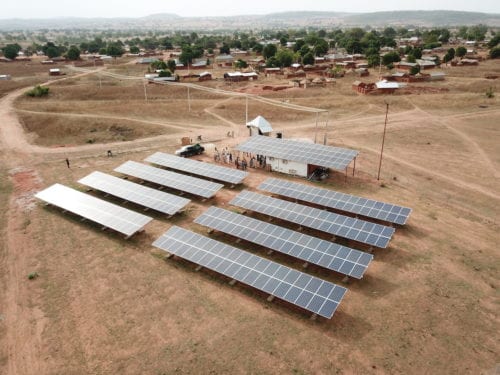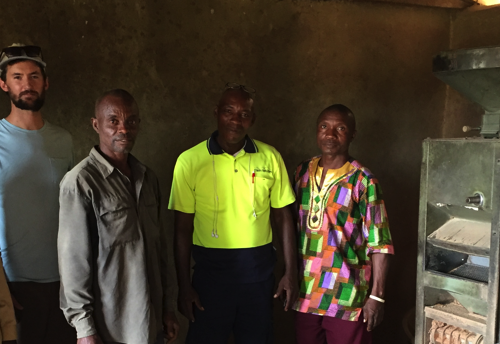
Letting Communities Lead
How Community-Led Minigrid Projects Can Strengthen Rural Electrification in Africa
Picture this: Although the year was 2012, many small communities in east India lacked access to modern power; wood fires, kerosene lanterns, and human power were the only ways to get things done. However, the government—specifically, a state-level Energy Development Agency—offered to provide community-scale electrification through a new solar minigrid system. Of course, the community consented. Once installed, the new power system provided lighting and cell charging for most households. The youth, especially, were thrilled. However, with limited technical knowledge, little incentive to maintain the system, and a common misunderstanding around the need to pay for power, the community has been unable to operate and maintain the system, which fell into disrepair within just a few months. The villagers, without the training to repair the system or the authority to pay for repairs, reverted to their old, polluting sources of energy and didn’t ultimately benefit from the project; assets of about $100,000 were stranded and unusable.
As we consider the challenge of bringing power and the services it enables to 600 million Africans who lack access, we can learn lessons from examples like this one. RMI’s Africa Energy Program is working to address challenges such as stranded assets that provide little value to anyone by exploring opportunities to strengthen rural electrification programs through community-led minigrids.
Many African communities exhibit strong leadership structures that can make or break the success of development projects. Through cooperatives (co-ops), religious groups, and local agricultural associations—to name a few—community members organize themselves in a wide variety of ways. Organizations that put projects into communities without understanding the underlying structures can fail to garner sufficient support, leading to low community buy-in, wasted funds, stranded assets, and minimal long-term impact. In contrast, engaging community leadership and existing organizational structures with a “bottom-up” community-centric process can mitigate such risks.
Stronger community engagement in rural development projects may indeed lead to better outcomes. For example, the Movement for Community-Led Development posits that, across sectors, community-led development can empower women, youth, and other marginalized groups by providing access to finance, strong governance, public services, and resilience against disasters. The energy sector in particular demonstrates a long history of community leadership for rural electrification. Community projects, especially those that include the development of co-ops, have been implemented across the world, including in South America, Africa, and Asia. In the United States, rural electrification was originally driven by locally owned co-ops. In Africa, organizations like NRECA International continue to experiment with co-op approaches.
In our work funded by the Dutch Postcode Lottery, we’re testing the impact that community-led minigrids can have on economic development as well as on other social outcomes, such as equity, health, and education, while improving system economics and sustainability. We define community-led projects as those that are designed in partnership with the community and account for local dynamics to address perceived challenges and development goals at the local level. Although the status-quo approach to minigrid development often reflects several elements of a community-led approach, we have found that few projects leverage the full breadth of such an approach. Our hypothesis is that community-led minigrid development adds value by lowering overall costs and increasing electricity demand for productive uses compared to a top-down model. A community-led approach may also help unlock a broader set of cost reductions to drive down system costs and electricity prices by 60 percent from 2018 figures.
Community-led minigrids offer a range of mechanisms for reducing system costs to increase energy affordability that will drive greater economic impact and system viability. Table 1 describes some of the opportunities for community-led projects to overcome several barriers facing minigrids today.
| Current Minigrid Challenges | Opportunity of Community-Led Minigrids |
| Suboptimal system design and low capacity utilization |
|
| Unsustainable operations and maintenance |
|
| Limited financing availability |
|
Table 1. Opportunities for community-led minigrids to overcome many current challenges.
Despite the anticipated benefits, many past community-led efforts have failed due to a variety of challenges along the project development chain and limited follow-through in cases of community-led system operation. Community-led projects can also be more time intensive to develop, because greater community involvement and engagement take time.
RMI’s Africa Energy Program will test the concept of community-led minigrids through the Sharing the Power project, with support from the Dutch Postcode Lottery. Over three years, Sharing the Power will implement several community-led minigrid projects across sub-Saharan Africa to demonstrate the concept, measure project success, and capture lessons learned for future efforts. Our team will engage partners to create a community-centered design process that builds on community input to create energy systems that meet their needs. By increasing the level of community involvement in project planning, design, and operation, we believe minigrids can become more impactful and more socially and financially sustainable. Our team hopes to test this belief in the coming months and is already assessing the potential for testing community-led minigrids in Nigeria and Ethiopia.
To keep current on the project, follow us on Twitter, visit the Sharing the Power website, or sign up for our quarterly newsletter. For more information on our community-led efforts, email ece@rmi.org.

